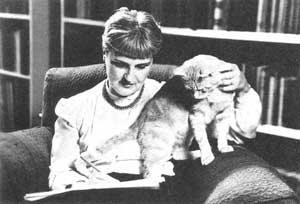http://www.scva.ac.uk/masterpieces/
I wasn't quite prepared for the scope of it, spanning the whole of history looking for the roles played in all walks of life by the area and people of East Anglia . While I can imagine some visitors being disatisfied with the obvious thin spreading of such a wide remit, I enjoyed it perhaps because it was a reminder of many people I had already heard of, a visual ticklist of all the talents of the region.
It was encouraging how many female artists were included, with one of Olive Edis's photos on the gallery guide. Olive served as a war artist in World War One, and was famous for portrait photography and autochrome photos. She took many photos of Norfolk fisherman, including the one on the guide and in the exhibition
But the first work you can't help but notice is the grand piece by Ana Maria Pacheco, an operatic arrangement of people on a boat, The Longest Journey (seen here in another space). I've already experienced a whole barn full of her work near to where I lived in Iken. Pacheco was Head of Fine Art at Norwich Art School for 1985 to 1989, and the boat she used for this piece was from Wroxham.
 Going back to the 17th Century, Mary Beale was a portraitist heavily influenced by Peter Lily. She was born in Barrow, Suffolk; her self-portrait is included in the exhibition.
Going back to the 17th Century, Mary Beale was a portraitist heavily influenced by Peter Lily. She was born in Barrow, Suffolk; her self-portrait is included in the exhibition.Mary Newcombe's art was inspired by the small farms she lived on in the Waveney valley; she is seen as a visionary artist who first trained as a scientist and drew birds at Flatford Mill Field Studies Centre.A couple of her very fine detailed paintings feature
I was already familiar with Elizabeth Frink's work, but according to the exhibition, her fascination for winged men, falling figures and birds originated from her childhood in Suffolk during the war years when she witnessed planes that had crashed there.

The exhibition finishes tomorrow with a talk by Maggi Hambling, one of whose North Sea paintings is featured.

 Gabriele
Munter was born in 1887 to upper middle class parents, who unusually
for the time encouraged her to become an artist; in her youth she was
also a talented pianist. As a woman she wasn't allowed to enroll in the
German Academy, but didn't feel challenged by the Woman's Artist School.
By twenty-two both her parents had died, she and her sister were both
left enough to live independently and in 1898 decided to visit their
extended family in America, which gave her social experience unusual for
women in the early 1900s.
Gabriele
Munter was born in 1887 to upper middle class parents, who unusually
for the time encouraged her to become an artist; in her youth she was
also a talented pianist. As a woman she wasn't allowed to enroll in the
German Academy, but didn't feel challenged by the Woman's Artist School.
By twenty-two both her parents had died, she and her sister were both
left enough to live independently and in 1898 decided to visit their
extended family in America, which gave her social experience unusual for
women in the early 1900s.




